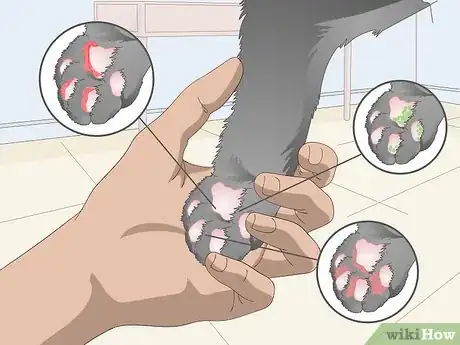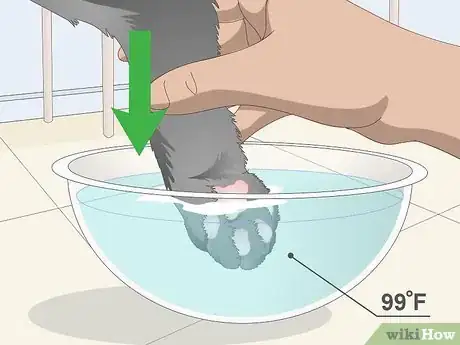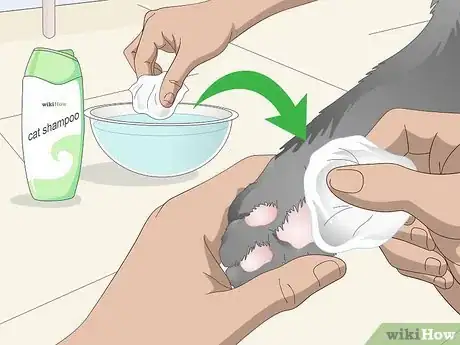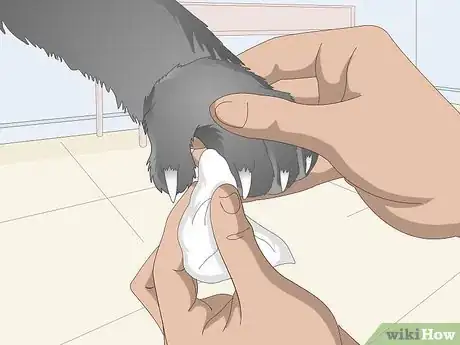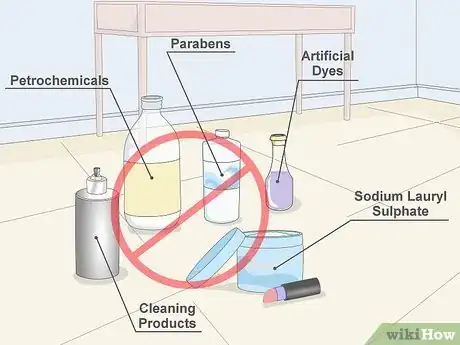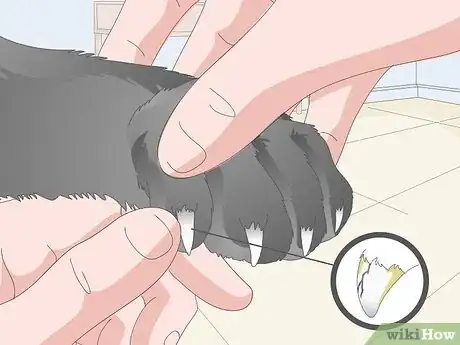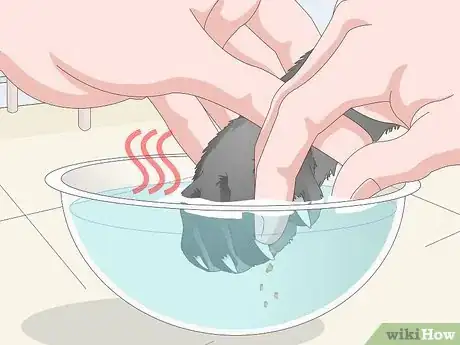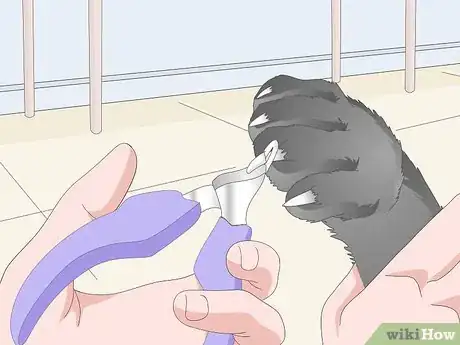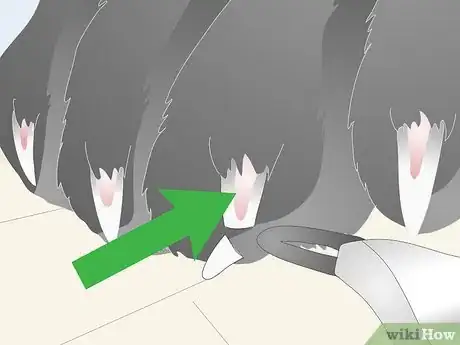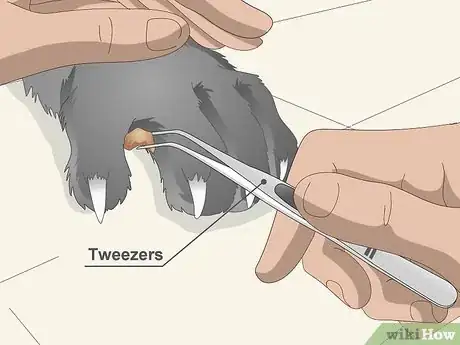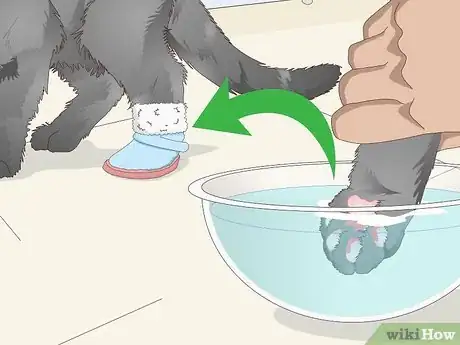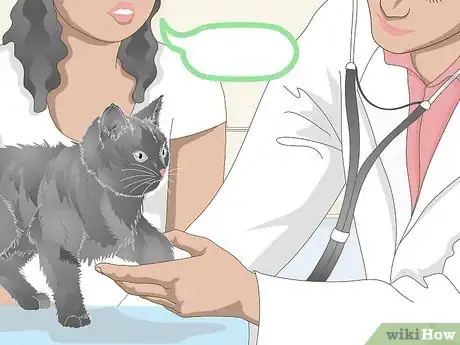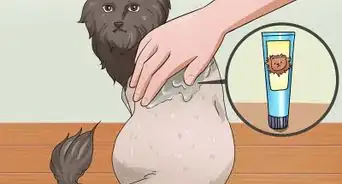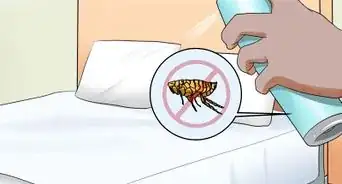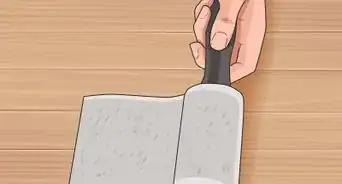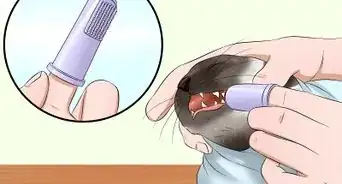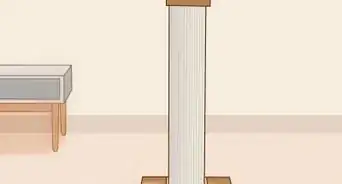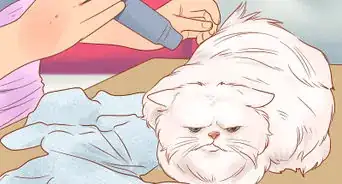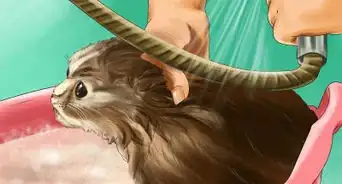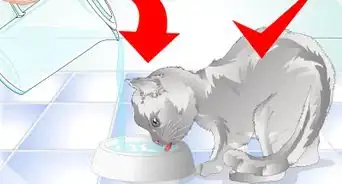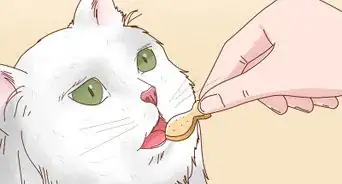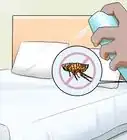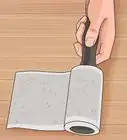This article was co-authored by Lauren Baker, DVM, PhD. Dr. Lauren Baker is a Veterinarian and Assistant Scientist at the University of Wisconsin-Madison. With over 10 years in veterinary medicine, she specializes in the concept of “one health,” which uses insights from veterinary medicine to help human medical research. She holds a Ph.D. in Comparative Biomedical Sciences, a Doctor of Veterinary Medicine, an MS in Comparative Biomedical Sciences, and a Bachelor’s degree in Psychology from the University of Wisconsin-Madison.
There are 7 references cited in this article, which can be found at the bottom of the page.
wikiHow marks an article as reader-approved once it receives enough positive feedback. In this case, 86% of readers who voted found the article helpful, earning it our reader-approved status.
This article has been viewed 45,813 times.
Since cats naturally clean themselves on a constant basis, humans don’t have to spend too much time attending to their overall hygiene. However, some parts of your cat – like their feet – require some care to ensure your feline friend’s basic health. To make sure your cat is generally healthy, you should provide regular foot cleaning care, make sure their nails are clean and intact, and be a proactive troubleshooter if you do encounter any problems while cleaning their feet.
Steps
Providing Regular Care
-
1Examine their feet. Before cleaning your cat’s feet, you should take a quick look at them. This will provide you with information about the general health of your cat’s feet. When examining their feet:
- Look for redness or sores. This could indicate allergies or infections.
- See if there is any green or black pus. This could indicate a virus or infection.
- If your cat has infection between their pads, your veterinarian may recommend an anti-microbial soak using such medicines as captan, chlorhexidine, or povidone iodine.[1]
-
2Rinse their feet. By rinsing their feet, you'll remove dirt and grime and make it easier for you to wipe down and clean your cat's feet. You’ll also aid in their self-cleaning process by removing debris before they lick their own feet.
- Pour warm water (99 degrees Fahrenheit or 38 degrees Celsius) into a medium size bowl or similar container.
- Quickly dip your cat's feet (one at a time) into the water.
- Skip this step if your cat doesn't want their feet dipped.[2]
Advertisement -
3Wipe their feet gently. After dipping, you should gently wipe your cat's feet in order to remove any excess dirt that remained after dipping. Wiping their feet down is important, as you'll be able to get dirt that wasn't removed when you rinsed their feet.
- Wet a clean microfiber cloth in warm water (99 degrees Fahrenheit or 38 degrees Celsius).
- Dab or wipe their feet thoroughly.
- If their feet are particularly dirty, use a little bit more water.
- If for some reason you need to use a shampoo or similar product, make sure it is formulated for cats. In addition, follow manufacturer directions regarding proper dilution.[3]
-
4Get in between their toes. In order to clean your cat's feet properly, you need to make sure that you clean between their toes. This is important, as dirt and grime may accumulate in hard-to-reach areas of your cat's foot.
- Gently separate their toes.
- Use your cloth or rag to wipe away dirt.
- Rinse your rag after you've cleaned a crevice between toes.[4]
-
5Avoid using chemicals not intended for cats. Since cats regularly lick their own feet to clean them, you should avoid using soaps or other chemicals not intended for cats. By using these products, you’ll potentially introduce chemicals that your cat will wind up licking and digesting. Stay away from:
- Artificial dyes
- Parabens
- Sodium laurel sulphate
- Petrochemicals
- Human cleaning products
- Cleaning products formulated for other animals[5]
Cleaning Cat Claws
-
1Inspect their nails. When inspecting your cat’s nails, look for any signs of damage, infection, or other problems. Nail health is important to overall hygiene, as an infection of the nail can quickly spread to other parts of your cat’s body.
- Look to see if the nails are intact.
- Observe to see if their claws are jagged, have been torn, or are missing pieces.
- See if there is any fungus present. This can appear as redness or swelling, or you may spot green, black, or yellow growth around the claws or pads.[6]
-
2Clean their claws. After inspecting their nails, you may need to systemically clean them. This is especially true if you notice fungus, other growth, or any sort of damage to their nails.
- Dip their feet in warm water.
- Gently dislodge all dirt, fungus, or other debris on the claws.
- Claw fungus is fairly rare. If your cat seems to have claw fungus, however, you should consult your vet. Your vet may then prescribe a topical antifungal, other cleaning agent, or even an oral antifungal.
-
3Trim your cat’s nails. Trimming your cat’s claws is a key part of maintaining proper hygiene for indoor cats. This is important, as many indoor cats don’t have the ability to wear their claws down as they would outside. Thus, their claws may grow long and may accumulate bacteria. However, when trimming your cat’s claws, make sure to use a proper cat claw trimmer.
- Position your trimmer perpendicular to the claw and along the transparent part of it.
- Make sure to avoid blood vessels – these appear as small pink triangles in the center of the nails (the “quick”). Avoid clipping near this area.
- Quickly cut the transparent part of the claw.
- If you’re afraid you’ll hurt your cat, trim just the tip of the claw. After you trim the tip, you can move up higher and take more of the nail off.
- If your cat does not respond well to nail trimming, you may need to have your vet do it.
- Clip one or two claws at a time before taking a break. Trying to get a whole foot or even all your cat’s feet might be too much to expect.[7]
-
4Avoid the quick. A cat’s quick is the portion of its claw where there is tissue and blood vessels. If you cut their quick, you’ll cause them pain and may expose them to the dangers of infection. Thus, you need to be very careful not to cut their quick.
- Always cut less nail than you need.
- If you cut the quick, consider using a silver nitrate applicator to stop blood loss. You’ll take the applicator and apply it to the area that is bleeding.
- Regardless of whether you use silver nitrate or not, the wound should stop bleeding in 5 minutes or so.[8]
Troubleshooting Foot Problems
-
1Remove foreign objects. Your cat may at some point step on an object that could become lodged in their foot. When this happens, you should remove the object and clean the foot properly.
- Use antibacterial soap and warm water to clean the area.
- Take tweezers and pull the object out.
- Apply an antiseptic like betadine to the wound.
- Cover your cat’s foot in a bootie or sock for a day or so, if the cat allows it.[9]
- Keep the cat from licking the wound, too. You may even use an e-collar to prevent this.
-
2Care for their foot pads. While a cat’s foot pads don’t require regular cleaning or attention, they may need to be cleaned if they are scraped or injured. This is important, as an injured foot pad may lead to serious infection or other problems. If you identify an injured foot pad:
- Look for signs of infection. These include redness, swelling, heat, or oozing fluid (pus). If it’s a small wound and doesn’t look infected, keep an eye on it until it heals and keep the surrounding area clean.
- Consider protecting the foot with a sock or cat bootie. A soft wrap is best – never bind anything tightly around your cat.
- Talk to your veterinarian. In some circumstances, your cat may need topical antibiotic or a course of oral antibiotics.[10]
-
3Consult your vet. There might come an instance when your cat’s feet exhibit symptoms or problems you’re not familiar with. In this case, you should talk to your veterinarian. Your veterinarian is trained to identify a wide variety of cat foot problems.
- Schedule a meeting with your vet. Make sure to tell the receptionist the details of your cat’s foot problem. For instance, if you notice black or green pus built up between your cat's toes, tell them.
- If your cat has had foot problems before, let the vet know about them. While they may have your cat’s medical records, they may not have had time to read them thoroughly.
- Inquire whether you should clean your cat’s feet before bringing them to the vet.
References
- ↑ https://www.vetinfo.com/cat-toe-infection-treatment.html
- ↑ http://www.aspca.org/pet-care/cat-care/cat-grooming-tips
- ↑ http://www.aspca.org/pet-care/cat-care/cat-grooming-tips
- ↑ http://www.aspca.org/pet-care/cat-care/cat-grooming-tips
- ↑ http://www.petful.com/pet-products/best-shampoos-for-cats/
- ↑ http://pets.thenest.com/cat-claw-fungus-5394.html
- ↑ https://www.vetmed.wsu.edu/outreach/Pet-Health-Topics/categories/procedures/cats/clipping-your-cat's-claws
- ↑ https://www.vetmed.wsu.edu/outreach/Pet-Health-Topics/categories/procedures/cats/clipping-your-cat's-claws
- ↑ http://www.cat-world.com.au/Cat-Health-Collection/splinters-in-cats.html
About This Article
To clean your cat’s feet, first rinse them by quickly dipping them in a medium-sized bowl of warm water. Once you’ve finished rinsing, take a wet, clean microfiber cloth and dab or wipe your cat's feet so you can remove any lingering dirt. Don’t forget to gently wipe between your cat's toes with the cloth too since dirt can gather in those hard-to-reach areas. When you clean your cat’s feet, you should also take care of its claws by trimming its nails with a cat claw trimmer so bacteria doesn’t accumulate there. Just remember to only cut the transparent part of its claws and not the quick where the blood vessels are as this can hurt your cat. For more tips from our Veterinary co-author, including how to remove any foreign objects lodged in your cat’s foot, scroll down!
